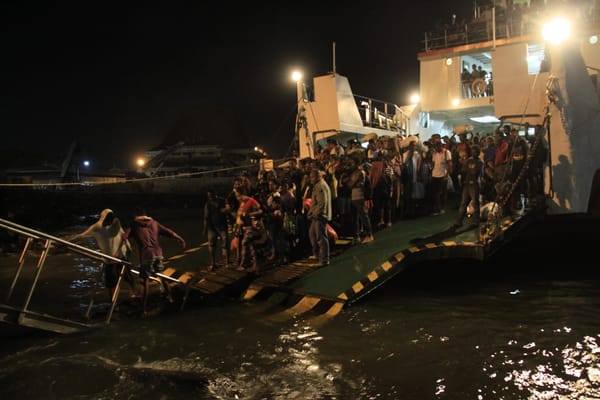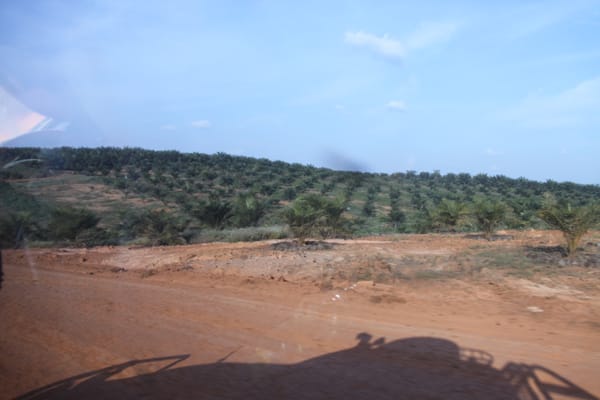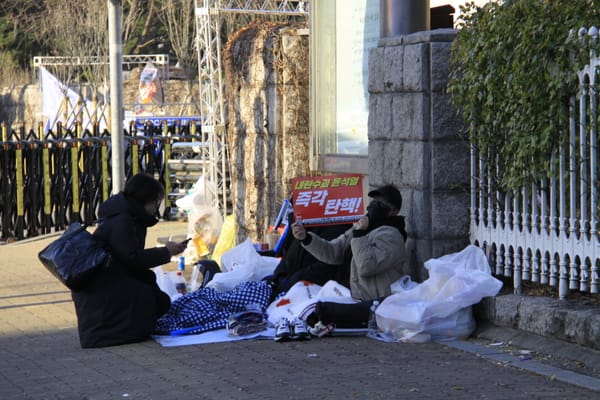Media Analysis: Mongolia as Seen Through The Eyes of Foreign Correspondents
Mongolia has been commonly exoticized in international media
This articleis by Anand Tumurtogoo, and has been edited slightly for length. Itwas originally published by Unbias the News, a project of Hostwriter.
If you enjoyed it, consider getting a paid subscription or donating and support more media analysis on how Asia is covered by international media.
Mind The Gaze!
Mongolia has been commonly exoticized in international media, contributing to stereotypes and limiting the opportunity for the global community to know more about its history, culture and the governance reforms its people have fought for.
For years I worked as a fixer for other foreign journalists to do their stories. Through their work I could see how rich and fascinating Mongolia is, from every nomadic herder to Shamans who weren’t allowed to practice their culture for most of the 20th century.
It was thanks to foreign media that I learned about my own country’s rich diversity of reindeer herders and the Kazakh Eagle hunters in the Altai Mountains. But that is the extent of most coverage about what Mongolia is to the rest of the world. Eagle hunters and reindeer herders are amazing people, but they are not the whole of Mongolia.
Stories of the eagle hunters have become so prosaic and contrived that both CNN and VICE published a story about how “hot” one eagle hunter, back to back in 2019 and 2020.
There were also the endless travel journals to the secluded reindeer herders and their efforts to reach them have grown so ubiquitous that words and phrases have become like a tired song on repeat.
Once you get so many stories of the same thing, it distorts the perception of Mongolia and reduces it to just an exotic backdrop for a few travel junkies.
Outside In
For the most part, much of the international coverage of Mongolia is through the gaze of non-Mongolians, and to an extent, an outsider’s view of our world. The resulting quality and message that this kind of reporting sends can be a tricky hit-and-miss.
At times, relying on an outsider’s view will not bring to light the intricacies of our way of life, but there are times it could compel others, including me, to see them from a different perspective too.
For instance, Mongolians have high regard and reverence for breast milk and nursing out in the open is a very common sight in my country. This may not be the case for all, as breastfeeding in public can be perceived differently in some societies. I, along with other Mongolians have become so accustomed to seeing breastfeeding in public, but because the coverage about who we are has become monotonous and even at times formulaic, I for one have forgotten to appreciate those very intricacies in my culture.
One photographer, on one hand, was so enthralled by the sight of old high school classmates who would meet after 10 to 50 years to catch up with each other in summer at the Sukhbaatar Square in central Ulaanbaatar city. The sight of 70- year- olds acting like teenagers amazed him, but to me and for many other Mongolians, it is just part of the beginning of summer in the city. But from an outsider’s perspective, I can understand how this could be a way for him to see how we, as Mongolians, value the community that we built in childhood.
Local Voices
As much as we appreciate these opportunities to spark different perspectives, we want the core and diversity of our culture, community and struggle to be finally told through and by local voices.
As a journalist who covers Mongolia for the rest of the world, my goal then was to share stories about Mongolia with the outside world and to share stories that might intrigue and give voice to Mongolians.
“Before we (locals) started to pitch stories for foreign media, only a few foreigners were covering Mongolia. And it was heartbreaking and funny that they interviewed and quoted foreigners only for their story about Mongolia,” Munkhchimeg Davaasharav, a freelance journalist and media consultant who has covered Mongolia for Reuters and numerous other publications, said in an online interview with me.
I became a journalist on that same notion, that it should be Mongolians who need to write about Mongolia to the outside world.
Aubrey Menard, a political scientist, the author of Young Mongols (2020) and a long time friend of mine mentioned in her book that, “In the New York Times archive, which dates back to 1851 and holds more than thirteen million articles, there are a mere 9,004 articles that even mention Mongolia. As if the lack of representation isn’t depressing enough, what’s telling us that there are about 2,000 more articles that mention Chinggis Khan (search term ‘Genghis Khan’) than there are articles that mention his country of origin.”
Her frustration stems from the fact that international media organizations have very little interest in covering Mongolia’s political climate.
In 2018, Ikon, a local news agency used open data sources to uncover the first definitive investigative reporting of corruption of top politicians embezzling state funds. It shook the country to its core, people took to the streets to demand accountability and it was the first time, thanks to local reporting, that a top political figure lost his power.
In a democratic society where corruption appears to be common, but it is difficult to definitively show, this was a remarkable act of journalistic prowess that is rarely seen in the country.
My wife and I, who also cover stories of Mongolia for the rest of the world, wanted to write a story about the incredible journalists who uncovered corruption. Every publication I pitched the story to though either didn’t reply or told me the “story wasn’t relevant.” My wife got the same answer.
Covering Democracy
Even with our flaws, Mongolia is a democratic country and to highlight our democratic achievements seems to go against what foreign publications usually want. This was a common scene for me and my wife, to have our original stories rejected if they didn’t fit current events, relate to China, or contain the Mongolian narrative of herders and eagle hunters.
A former Mongolian official, who requested anonymity, explained why the reportage on Mongolia should go beyond that. He said that it is critical that the transgressions and shortcomings of Mongolian’s politicians be also exposed to the international audience to send the message that these should not be tolerated.
“Most people assume Mongolia is doing okay economically and democratization-wise and would rather ignore the sins of the current rulers as long as the strategic orientation of the country is more or less to their liking. So it is important to expose wrongdoings of politicians for the international audience, as it gives them [a] jolt [of] realization that wrongdoings should not be tolerated.”
Dr. Marissa J. Smith, research associate at the Institute of East Asian Studies (IEAS) at the University of California, Berkeley, also decried the lack of coverage on the country’s state of politics.
“The consensus among political scientists working on Mongolia is that the country’s democracy is deteriorating, and journalism on Mongolian politics is essential for academics like me.”
“Foreign” correspondent, but not foreign gaze
Then there are the overlooked stories of how our traditional way of life is killing us. Mongolia has one of the highest number of gastric cancer cases in the world. In particular, rural Mongolians who live with gastric cancer will have a higher chance of dying from the disease than their city-dwelling counterparts.
Just in the last four years, the number of deaths from gastric cancer outside of Ulaanbaatar city rose dramatically. As of 2017, 263 people died from the disease in Ulaanbaatar, while 7837 deaths from the disease were registered in the countryside. I pitched this story to some publications, but very few responded to my inquiries, those who did either stopped responding back or stated, “It wasn’t a right fit for their publication.”
Many of the foreign journalists I’ve worked with saw and experienced things in Mongolia that might enrich the knowledge of the global audience. They also worked on stories that were beyond the norm, but their stories were turned down by editors who said they weren’t relevant.
But it’s time for stories that are different, add value and rectify misconceptions to see the light of the day - and Mongolians alike can certainly tell them.
Thankfully, there are publications like the Global Press Institute, which opened a newsroom in Mongolia in 2019 and has published stories done by local reporters about local issues which were told to a worldwide audience.
I became a “foreign” correspondent in order to tell stories about Mongolians who are doing incredible things that advance our culture in the 21st century, as well as to tell stories about Mongolians from the perspective of a Mongolian who grew up in the country. I understand it will be a long and difficult journey, but I believe enough resilience and pushback will help people around the world see and appreciate Mongolia’s entirety – beyond the exotic, the romantic, the ‘hot’ and the convenient.
Asia Undercovered: In-depth round-ups and analysis of the news, events, trends and people changing Asia, but not getting enough attention in the US media.



